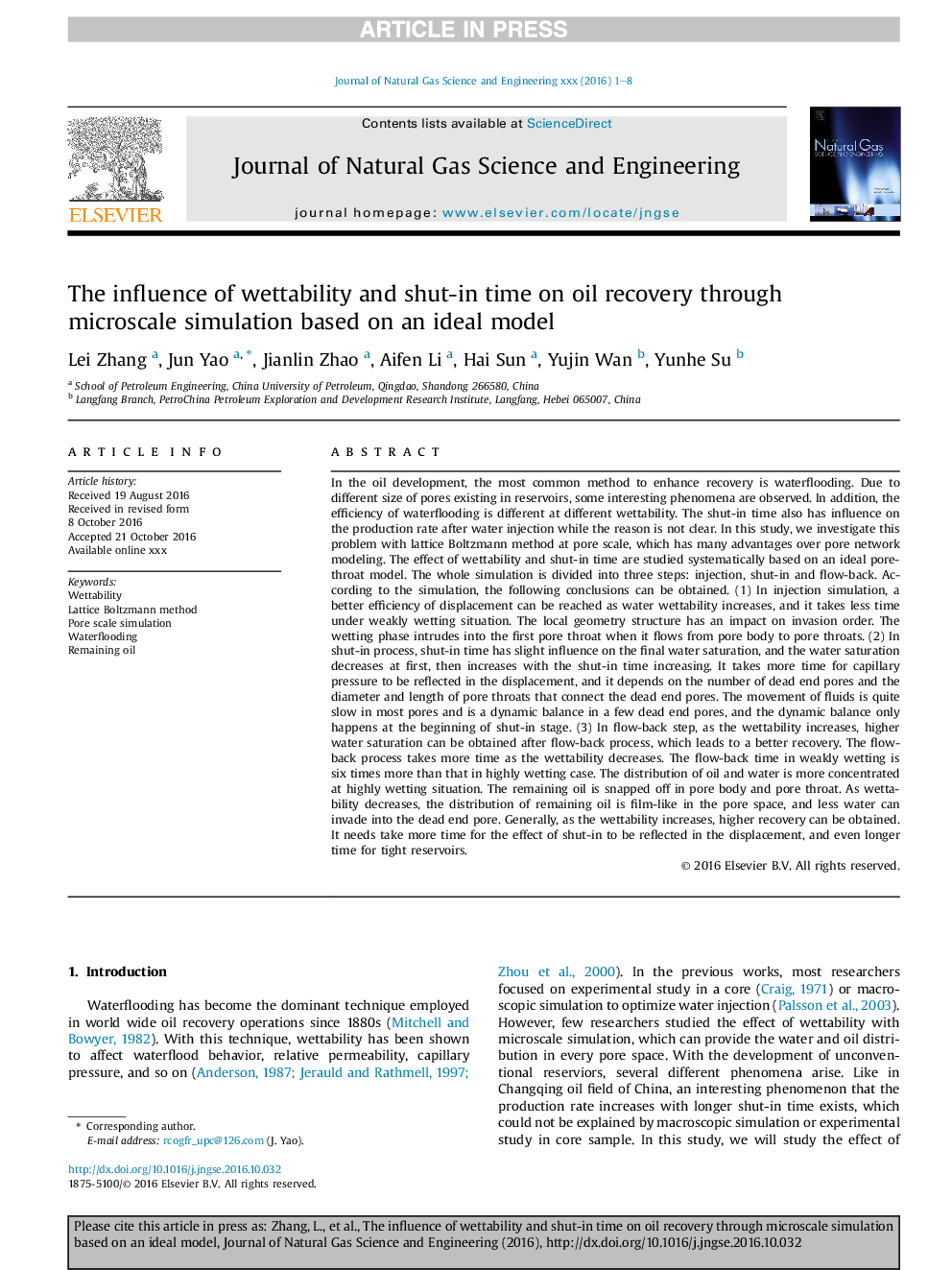| کد مقاله | کد نشریه | سال انتشار | مقاله انگلیسی | نسخه تمام متن |
|---|---|---|---|---|
| 8128507 | 1522995 | 2017 | 8 صفحه PDF | دانلود رایگان |
عنوان انگلیسی مقاله ISI
The influence of wettability and shut-in time on oil recovery through microscale simulation based on an ideal model
ترجمه فارسی عنوان
تاثیر تکثیر و زمان بستن در بازیافت نفت از طریق شبیه سازی میکروسکوپی بر اساس یک مدل ایده آل
دانلود مقاله + سفارش ترجمه
دانلود مقاله ISI انگلیسی
رایگان برای ایرانیان
کلمات کلیدی
موضوعات مرتبط
مهندسی و علوم پایه
علوم زمین و سیارات
علوم زمین و سیاره ای (عمومی)
چکیده انگلیسی
In the oil development, the most common method to enhance recovery is waterflooding. Due to different size of pores existing in reservoirs, some interesting phenomena are observed. In addition, the efficiency of waterflooding is different at different wettability. The shut-in time also has influence on the production rate after water injection while the reason is not clear. In this study, we investigate this problem with lattice Boltzmann method at pore scale, which has many advantages over pore network modeling. The effect of wettability and shut-in time are studied systematically based on an ideal pore-throat model. The whole simulation is divided into three steps: injection, shut-in and flow-back. According to the simulation, the following conclusions can be obtained. (1) In injection simulation, a better efficiency of displacement can be reached as water wettability increases, and it takes less time under weakly wetting situation. The local geometry structure has an impact on invasion order. The wetting phase intrudes into the first pore throat when it flows from pore body to pore throats. (2) In shut-in process, shut-in time has slight influence on the final water saturation, and the water saturation decreases at first, then increases with the shut-in time increasing. It takes more time for capillary pressure to be reflected in the displacement, and it depends on the number of dead end pores and the diameter and length of pore throats that connect the dead end pores. The movement of fluids is quite slow in most pores and is a dynamic balance in a few dead end pores, and the dynamic balance only happens at the beginning of shut-in stage. (3) In flow-back step, as the wettability increases, higher water saturation can be obtained after flow-back process, which leads to a better recovery. The flow-back process takes more time as the wettability decreases. The flow-back time in weakly wetting is six times more than that in highly wetting case. The distribution of oil and water is more concentrated at highly wetting situation. The remaining oil is snapped off in pore body and pore throat. As wettability decreases, the distribution of remaining oil is film-like in the pore space, and less water can invade into the dead end pore. Generally, as the wettability increases, higher recovery can be obtained. It needs take more time for the effect of shut-in to be reflected in the displacement, and even longer time for tight reservoirs.
ناشر
Database: Elsevier - ScienceDirect (ساینس دایرکت)
Journal: Journal of Natural Gas Science and Engineering - Volume 48, December 2017, Pages 178-185
Journal: Journal of Natural Gas Science and Engineering - Volume 48, December 2017, Pages 178-185
نویسندگان
Lei Zhang, Jun Yao, Jianlin Zhao, Aifen Li, Hai Sun, Yujin Wan, Yunhe Su,
